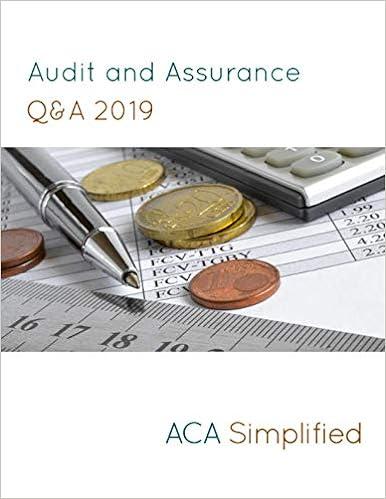Sammy Smith is the partner in charge of the audit of Blue Distributing Corporation, a wholesaler that owns one warehouse containing 80 percent of its inventory. Smith is reviewing the audit documentation that was prepared to support the firm's opinion on Blue's financial statements and wants to be certain that essential audit procedures are well documented. Required: a. What evidence should Smith expect to find indicating that the observation of the client's physical count of inventory was well planned and that assistants were properly supervised? b. What substantive procedures should Smith find in the audit documentation of management's balance assertions about existence and completeness of inventory quantities at the end of the year? (Refer to Appendix 98 for the audit plan's procedures.) Appendix 9B Audit Plans APPENDIX EXHIBIT DE 1 DUNDER-MIFFLIN, INC Audit Plan for Physical Inventory Observation December 31, 2017 Performed by Ref. 1. Obtain client's inventory-counting instructions and review for completeneu. 2. Tour facility before the inventory count looking for out-of-the-way items, obsolete item, and patterns of inventory flow 3. Observe client personnel taking inventory counts for compliance with instruction 4. Test count a selection of items throughout the facility, and record a sample of your test counts Note description, stage of completion counting unit, and condition 5. Obtain and record tag numbers used and enture all tag numbers are accounted for 6 Select sample of used tags and trace them to the item on the floor 7. Record the last five receiving reports and last five shipping documents and the numbers of next five unused items in sequence. Vouch the recorded items to inventory count to determine that the item was appropriately included (or excluded) from the inventory count 8. Tour facilities to ensure all items have been counted APPENDIX EXHIBIT OB.2 DUNDER-MIFFLIN, INC Audit Plan for Inventory Observation and Cost of Goods Sold December 31, 2017 Performed by Ref. Inventory 1. Obtain client's inventory list, recalculate, and check it against the general ledger 2. Trace test counts from inventory observation to the final inventory compilation 3. Select a sample of inventory items. a. Vouch unit prices to vendors invoices or other cost records b. Recalculate the inventory valuation for sampled items 4. Scan the inventory compilation for items added from sources other than the physical count and items that appear to be large round numbers or systematic fictitious additions 5. Recalculate the extensions and footings of the final inventory compilation for mathematical accuracy. Reconcile the total to the adjusted trial balance 6. For selected inventory items and categories, determine the replacement cost and the applicability of lower-of-cout-or-NRV valuation 7. Inspect inventory for evidence of obsolete or damaged goods. Trace identified obsolete or damaged goods to inventory records for write-down. 8. Inquire about obsolete, damaged, slow-moving, and overstocked inventory. 9. Scan the perpenual records for slow-moving items. 10. During the physical observation, be alert to notice damaged or scrap inventory 11. Compare the list of obsolete, slow-moving damaged, or unsalable inventory from last year's audit to the current inventory compilation 12. At year-end, identify the numbers of the last shipping and receiving documents for the year. Compare these to the sales, inventory/cost of sales and accounts payable entries for proper cutoff. 13. Read bank confirmations, debt agreements, and minutes of the board and make inquiries about pledge or assignment of inventory to secure debt 14. Inquire about inventory held by third parties on consignment and inventory on hand on consignment from vendors 15. Confirm or inspect inventorics held in public warehouses Page 442 16. Recalculate the amount of intercompany profit to be eliminated in consolidation 17. Obtain management representations concerning pledging of inventory as collateral, intercompany sales, and other related-party transactions Cost of Sales 1. Select a sample of recorded cost of sales entries and vouch to supporting documentation 2. Select a sample of basic transaction documents (such as sales invoices, production reports) and determine whether the related cost of goods sold was figured and recorded properly. 3. Review the accounting costing method used by the client (such as FIFO, LIFO, standard cost) for proper application 4. Compute the grous margin rate and compare to prior years. 5. Compute the ratio of cost elements (such as labor, material) to total cost of goods sold and compare this ratio to that for prior years









